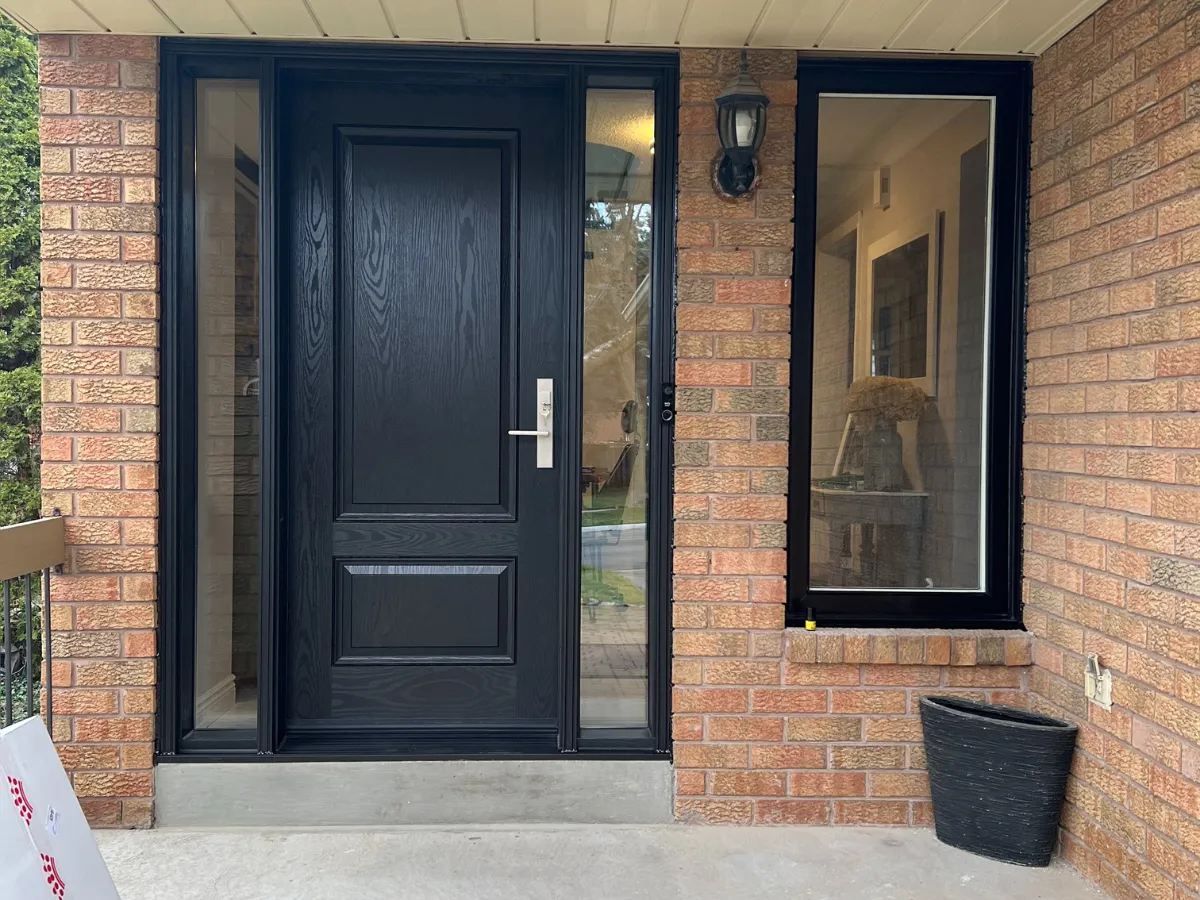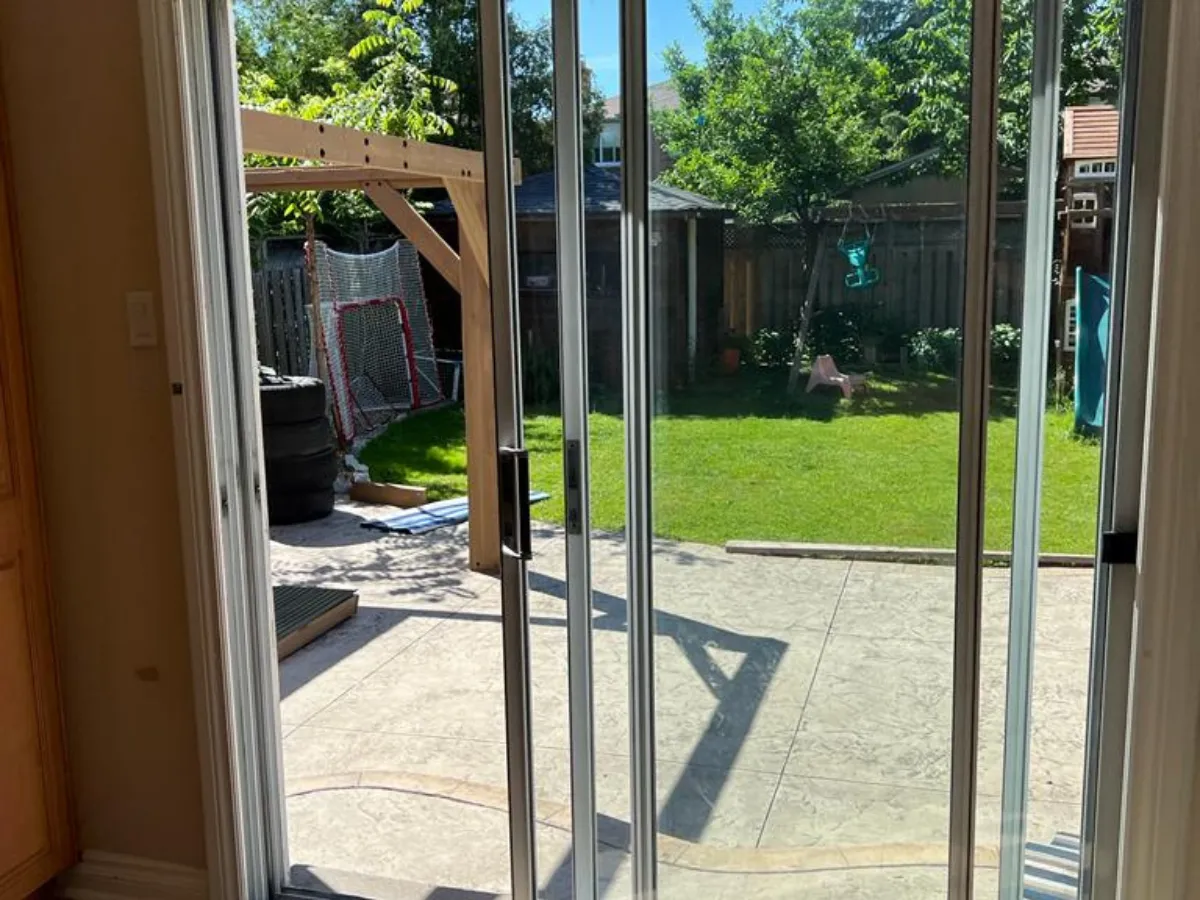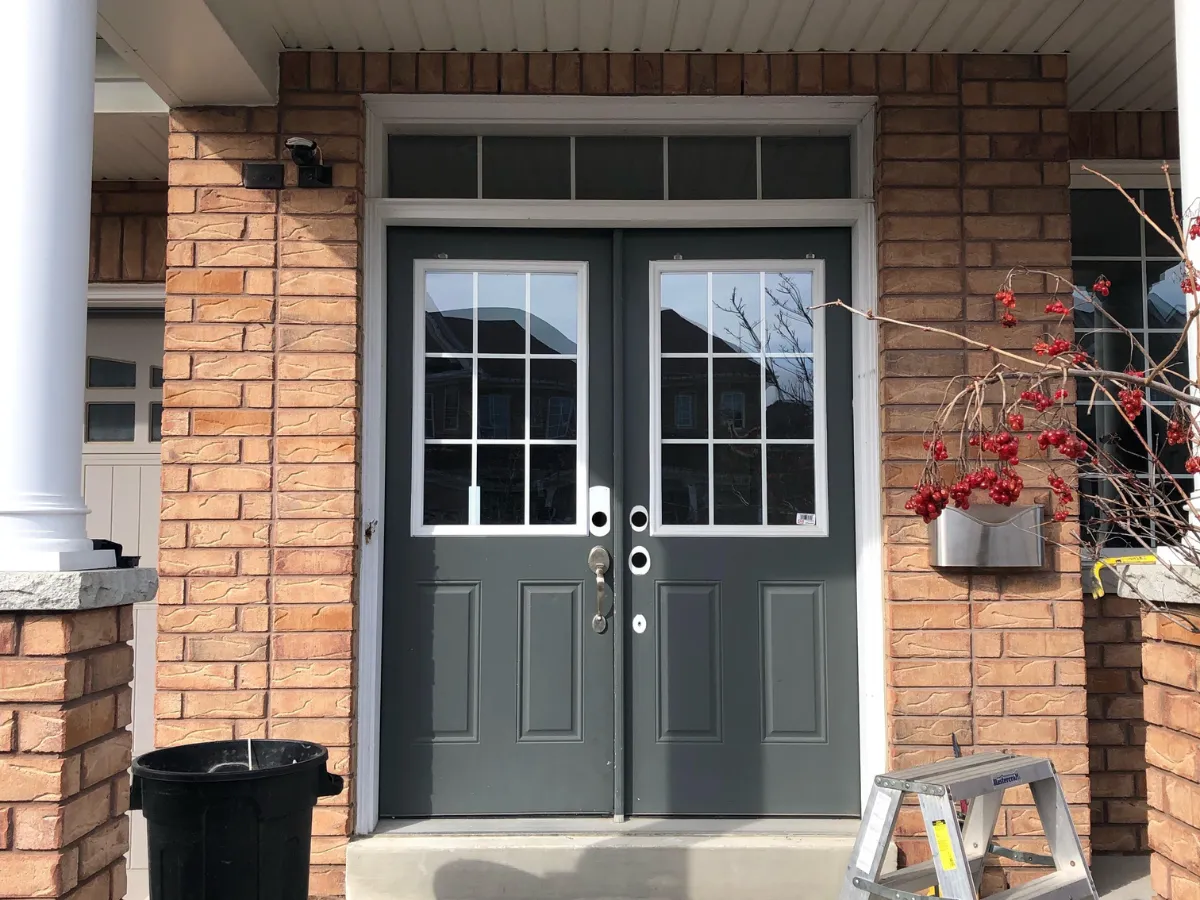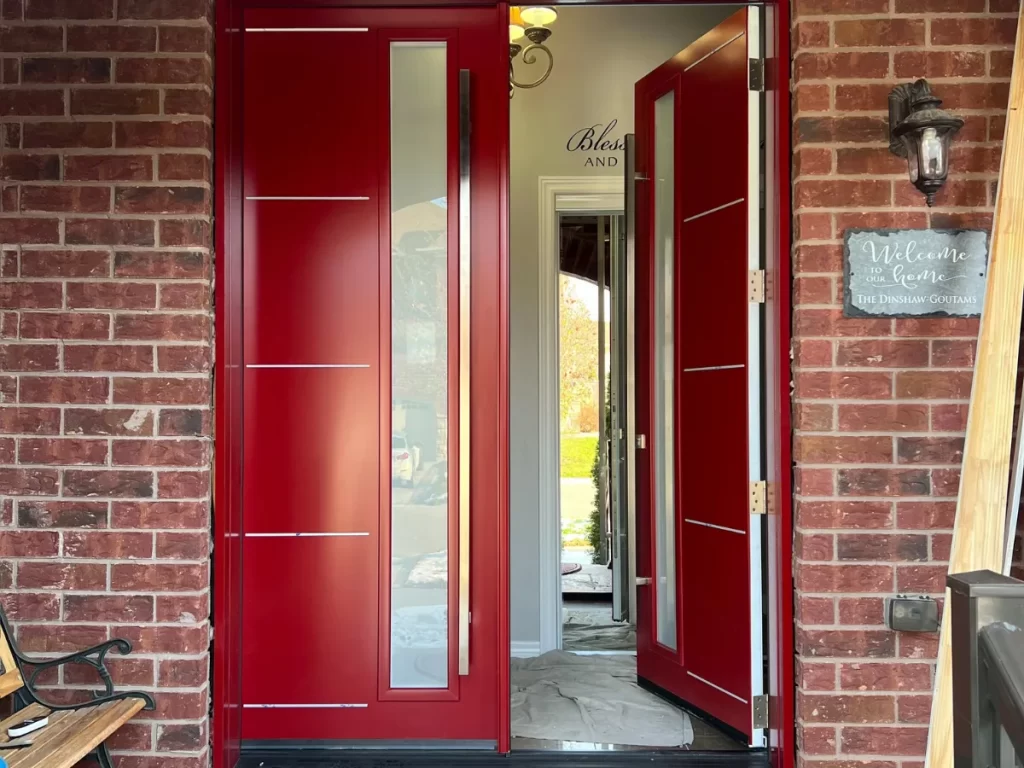Toronto has no shortage of character-filled homes. From historic Victorians in Cabbagetown to red-brick semis in The Junction and leafy Tudors in Forest Hill, these properties carry a charm that’s hard to find in modern builds. But what they also often carry, especially during Toronto’s harsh winters, are long-standing draft issues Toronto homeowners know all too well.
These homes weren’t built with today’s energy codes in mind. Many have outdated materials, aging construction, and gaps that have slowly widened over decades. And while the chill may seem like part of the deal with older Toronto homes, the good news is that it doesn’t have to be. With the right windows and door updates in Toronto and a better understanding of where drafts start, you can live in comfort year-round, without sacrificing heritage style or warmth.
Understanding why drafts are so common in Toronto’s older homes is the first step.
What Draft Issues Are Common In Toronto
Unlike more recent construction in neighborhoods like Liberty Village or CityPlace, older Toronto houses were built with single-pane glass, wood frames, and little insulation. Toronto house doors and windows that were built before the 1970s often weren’t sealed with regard to energy. Materials like plaster, wood, and aluminum were popular, and while these can be incredibly durable, they weren’t designed to cope with the extent of temperature fluctuation that we do now in the city.
Toronto winters usually dip to -10°C or lower on a consistent basis, with wind chill further reducing the temperature. Throw in the sweltering, humid summers, and it’s little surprise that expansion, contraction, and good old-fashioned wear have created the perfect storm for air leaks.
Basements in neighborhoods like Parkdale and Little Portugal settle over decades of freeze-thaw, causing slight warping in walls and frames. A few millimeters of shift over time can be the difference between a snugly closed window and a perpetual, cold draught.

Where Draft Issues Around Windows And Doors In Toronto Are Coming From
A lot of homeowners assume drafts only come from windows and doors, but there are plenty of less obvious places where cold air sneaks in, especially in older properties.
Failing Seals Around Window And Door Frames
The most common culprit remains worn or aged weatherstripping around doors and windows in Toronto. When your seals were installed twenty years ago, chances are good that they’re cracked, brittle, or even missing. Frames become then draft magnets when no seal exists. These are especially prevalent in homes across Leslieville, The Annex, and Bloor West Village, where original components were preserved but not updated.
What to watch for:
- Cold air blowing near the edges of windows or doors
- Light visibly passing through when the door is closed
- Rattling windows on windy days
Basement Bulkheads And Crawlspaces
Basement access doors in older homes throughout East York and Scarborough are often poorly insulated. The same goes for crawlspace hatches in bungalows around Mimico or New Toronto, where cold air seeps up from below.
Unsealed Chimney Flues And Fireplaces
Rosedale and Forest Hill homes are known for their beautiful fireplaces, but if you haven’t used yours in years and the damper doesn’t seal tightly, it could be acting like a vacuum, sucking warm air out and pulling in cold drafts.
Signs this is happening:
- A cold breeze near the hearth
- A noticeable drop in room temperature
- Ash or soot particles scattered after a windy day
Electrical Outlets And Wall Penetrations
In homes built before the 1960s, especially across Roncesvalles and Danforth Village, outlets on exterior walls often have little or no insulation behind them. You’ll feel cold air coming through outlets and baseboards, even if your windows and doors are in good shape.
Quick fixes to consider:
- Foam gaskets under outlet covers
- Caulking along baseboards
- Sealing penetrations where wires and pipes exit walls
Recessed Lighting In Attics
If you’ve ever had pot lights added to the upper floor of your Leaside or Davisville home, and the installer didn’t air-seal around the cutouts, you’re probably losing heat directly into the attic.

How To Find The Real Problem Areas
Use A Smoke Pencil Or Incense Stick
Hold it near edges of windows, baseboards, electrical outlets, and anywhere cold air might be leaking in. If the smoke wavers, you’ve found a draft.
Pay Attention To Rooms That Are Consistently Colder
Drafts aren’t always obvious, but if one room stays freezing while the rest of the house is fine, you’re likely dealing with hidden leaks or poor insulation in that section.
Call For A Professional Energy Audit
A blower door test will depressurize your home slightly, allowing the auditor to measure exactly how much air is leaking out. This is especially useful in older Toronto homes with multiple additions or renovations over the years.
What You Can Actually Do To Fix Draft Issues For Good
Upgrading and sealing problem areas doesn’t just make your home more comfortable, it can lower your heating bill by 20% or more, according to Natural Resources Canada.
Replace Aging Seals And Weatherstripping
Modern weatherstripping is better at resisting moisture, UV light, and temperature changes. Foam, silicone, or magnetic stripping works well on windows and doors, especially if you live near Lake Ontario where the air is damp year-round.
Air Seal Around The Frames
Use low-expansion spray foam or backer rod and caulk around window and door frames. In older homes in areas like The Annex or Leslieville, where the trim is decorative, be sure to seal behind it without altering the aesthetic.
Install A Chimney Balloon
If your fireplace is unused, a chimney balloon can block cold air while still being removable when needed. It’s a quick win in homes with multiple fireplaces, like those in Moore Park or Lawrence Park.
Upgrade Insulation In Attics And Crawlspaces
Many older homes in Toronto still have rock wool or vermiculite insulation, both of which are outdated and inefficient. Blown-in cellulose or closed-cell spray foam will dramatically reduce heat loss and improve comfort levels.
Replace Failing Windows And Doors
Newer windows and doors in Toronto are designed to look just like the originals but perform like modern units. You don’t have to lose the stained-glass look or the divided-light feel. With ALDA’s custom solutions, you can get the style that matches your home’s heritage while solving those long-standing draft problems for good.

The Cost Of Ignoring Small Draft Issues In Toronto Adds Up Quickly
Even if your furnace or heat pump is running nonstop, if warm air is leaking out around aging frames or cold air is constantly seeping in, you’ll never feel truly comfortable. According to Enbridge, the average Toronto home spends 50% of its energy costs on heating. If your home is drafty, a huge chunk of that money is being wasted.
Drafts also lead to more than just chilly rooms. They cause condensation, which can damage wood window sills, lead to mold growth, and accelerate the breakdown of plaster and paint. Not to mention that it puts added stress on your HVAC system, meaning more maintenance and a shorter lifespan for your equipment.
Neighborhood Breakdown: Common Draft Issues Across Toronto
Toronto Area |
Common Problem |
Recommended Fix |
| Cabbagetown | Original wood windows with cracked glazing | Replace with custom-insulated units, seal around interior trim |
| High Park | Chimney drafts from unused fireplaces | Install chimney balloon, seal damper |
| Leslieville | Gaps around window frames after renos | Air seal gaps, upgrade to efficient window units |
| East York | Drafts through basement access hatches | Install insulated doors, apply foam weatherstripping |
| Rosedale | Cold air through antique door frames | Add compression seals, adjust or realign heavy doors |
| Forest Hill | Attic heat loss and ceiling drafts | Add attic insulation, seal recessed lighting |
| Parkdale | Outlet leaks on exterior walls | Install foam outlet gaskets, seal wall cavities |
Fixing Toronto Homes Draft Issues With Real Solutions, Not Temporary Tricks
Sealing edges and thick drapes will exclude the cold in the short run, but they will not stop heat loss at the source. Whether you are in Summerhill or The Junction, fixing up leaks on older homes calls for a long-term solution and some know-how.
That’s where working with local experts comes in. At ALDA, we’ve helped homeowners across Toronto, from Etobicoke to the Upper Beaches, repair and replace outdated systems with modern solutions that blend seamlessly with the home’s original design.
Don’t let another winter pass with cold spots in your home. A proper inspection and professional installation services can work wonders. Whether it’s a full window and door replacement or some simple sealing upgrades, the secret is getting it right.
For homeowners looking for a combination of performance and authenticity, we provide personalized window and door designs exclusively for Toronto’s traditional homes. Comfort and character, no compromises.
Let us help you seal the gaps. Get in touch with the ALDA team and seal those drafts for good and upgrade your home with new windows and doors!

